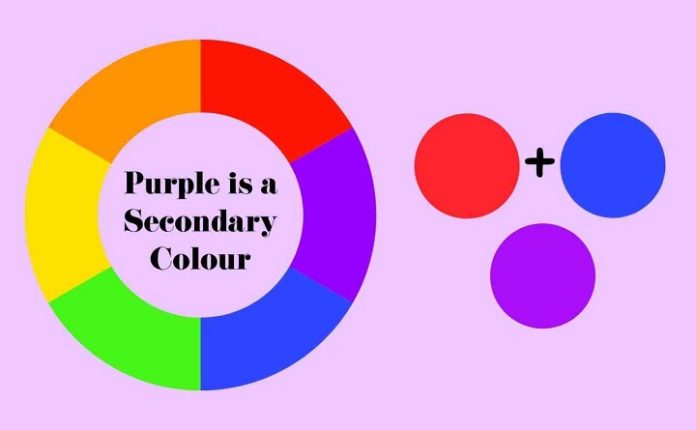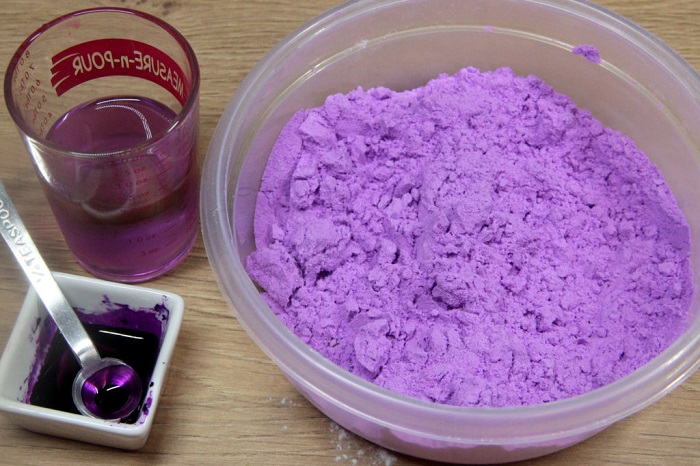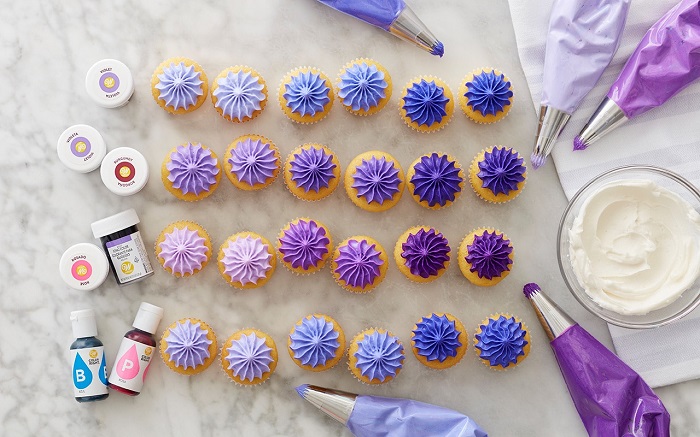What Colors Make Purple?
To create purple, you’ll need a basic understanding of color mixing and the primary colors. Purple is a secondary color that results from mixing red and blue. But not all reds and blues are the same, so experimenting with various tones will yield different shades of purple.
- Primary Colors Needed: Red and blue
- Mixing Principle: Equal parts of red and blue generally yield a classic purple
- Variation: More red creates a warmer, magenta-like purple, while more blue produces a cooler, violet hue
Step-by-Step Guide to Mixing Purple
For successful color mixing, it’s essential to work with clean brushes and a palette. Here’s a basic guide to mixing purple:
Prepare Your Workspace
Use a white or neutral-colored palette to view your colors clearly.
Have clean brushes or mixing sticks to avoid muddying the color.
Choose Your Red and Blue Paints
Experiment with warm and cool reds and blues to find the ideal tone.
Recommended options include cadmium red and ultramarine blue for a rich, deep purple.
Start Mixing in Small Quantities
Start with a 1:1 ratio of red and blue.
Mix thoroughly to assess the initial color.
Adjust Based on Preference
-
- Add more red for a warmer purple.
- Add more blue for a cooler, darker shade.
Color Theory Behind Purple
Purple sits between blue and red on the color wheel, giving it a unique vibrancy that can range from warm to cool. Here’s a breakdown of the types of purple you can create:
- Cool Purple: More blue than red, resembling shades like indigo and violet.
- Warm Purple: More red than blue, resulting in a shade closer to magenta or plum.
- Muted Purple: Adding a touch of complementary color (yellow) can mute purple, creating shades like lavender or mauve.
Also Read: MBA in Business Analytics
Creating Different Shades of Purple
Purple is a versatile color with many shades that can suit different artistic needs. Here’s how to adjust the color further:
How to Make Light Purple (Lavender or Lilac)
To create light purple, follow these steps:
- Mix purple as usual using red and blue.
- Slowly add white to the mixture to lighten the shade.
- For a more pastel hue, add additional white and a touch of yellow.
How to Make Dark Purple (Eggplant or Plum)
For darker, moodier purples:
- Start with a purple base from your red and blue mixture.
- Add a small amount of black or more blue for depth.
- For a rich, earthy shade, try adding brown instead of black.
How to Make Muted or Grayish Purple
Muted purples are popular for their soft and subtle aesthetic. To achieve this:
- Begin with a standard purple mixture.
- Add a tiny bit of yellow or gray.
- Adjust as needed to reach the desired muted tone.
Mixing Purple with Other Colors
Combining purple with other colors can help create unique hues. Here are some interesting combinations:
- Purple + Pink: Creates a warmer, rosy purple shade.
- Purple + Green: Results in earthy, brownish purples, ideal for muted designs.
- Purple + Yellow: Produces softer, pastel shades or muted tones depending on the proportion.
- Purple + Gray: Yields a sophisticated, smoky purple.
Tips for Making Purple with Different Mediums
Different mediums may require different techniques when mixing purple. Here’s how to achieve the best results with various materials:
Acrylic Paint
- Acrylic paint dries quickly, so work fast.
- Use a palette knife for thorough mixing.
- Add a gloss or matte medium to adjust the final look.
Watercolor Paint
- Start with very light layers and build up the color.
- Mix with plenty of water for a soft, transparent purple.
- Experiment with layering for different shades.
Colored Pencils or Pastels
- Begin with light layers of red and blue.
- Use blending tools or light strokes to create a smooth mix.
- Apply white to soften or blend hues as needed.
Common Mistakes When Mixing Purple and How to Avoid Them
Mixing colors can be challenging, and purple is no exception. Here are some pitfalls to avoid:
- Using Muddy Colors: Ensure your red and blue pigments are vibrant and free from yellow undertones to avoid dull purples.
- Adding Too Much Black: Use black sparingly to darken purple, as too much can make it look muddy.
- Over-Mixing: Overworking the colors can reduce the vibrancy, so mix only until the desired shade is reached.
FAQs on Making Purple
Can You Make Purple Without Red?
No, red is essential for making purple. However, different shades of red (like magenta) can create varying purple hues.
What Is the Easiest Way to Make Purple in Digital Art?
In digital programs, use the color wheel or RGB sliders to set red and blue values. Experimenting with saturation and brightness can yield precise purple shades without physical mixing.
Can I Make Purple Using Food Coloring?
Yes! Mix red and blue food coloring, starting with equal parts, and adjust based on the desired shade. Add a little white or yellow for pastel or warmer purples.
Creating purple is an exciting journey that allows you to experiment with various shades, tones, and techniques. Whether you’re working with paints, digital media, or food coloring, the key lies in balancing red and blue hues and adjusting to achieve just the right shade. Follow this guide to make your own perfect purple, and enjoy experimenting with the many possibilities this color brings to your projects!



